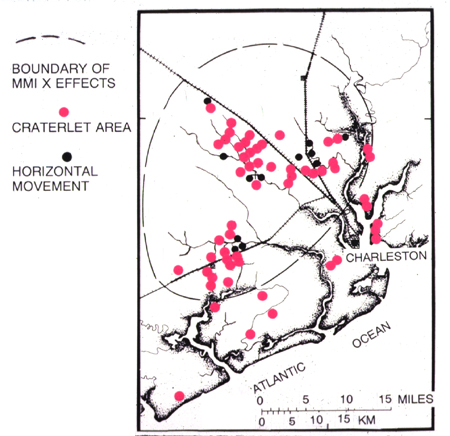

49. Extensive liquefaction occurred within
the meizoseismal region during the 1886 earthquake. The dominant
manifestation of liquefaction was very different from the features
we have been looking at in the New Madrid and Wabash regions.
Large numbers of "craterlets" developed. The slide shows
where craterlets (pink dots) were concentrated. The slide also
shows sites of conspicuous horizontal movements (lateral spreads,
shown as black dots).
The slides in the Charleston area are included
to demonstrate the strong influence of the properties of the cap
on the morphology of the liquefaction features (mainly formation
of craterlets versus the steeply dipping clastic dikes that we
saw in the New Madrid and Wabash Valley areas). The craterlets
in the Charleston area are exceptionally well expressed in a sand
cap that is weakly cemented with humate near the ground surface;
similar craterlets were induced by the 1811-1812 New Madrid earthquakes,
but typically only in restricted locales where a weakly cemented
sand at the ground surface overlaid the liquefied sand.
Features in the Charleston that developed by chemical weathering are also shown. Without careful examination, these features could be misinterpreted as having a seismic origin.
For more information, contact Stephen F. Obermeier